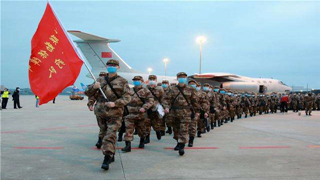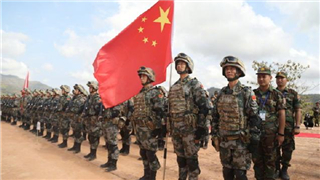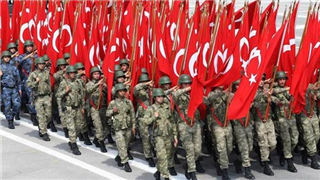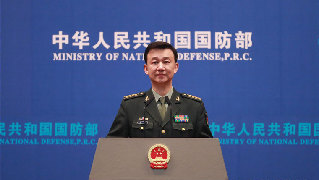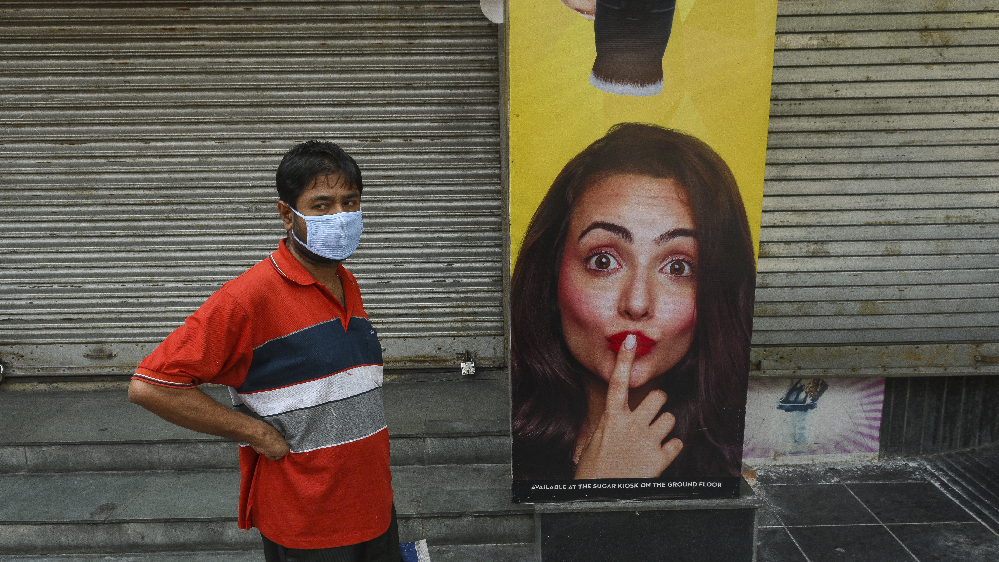
When the world's second-largest economy, China is returning to its rhythm after winning the "people's war" against the novel coronavirus (COVID-19) outbreak, most of the countries across the world are witnessing national lockdown or state of emergency with a view to slow the raging outbreak of this virulent disease. Undoubtedly, China-initiated lockdown strategy has now become the biggest tool in controlling the rapid spread of COVID-19 in almost every corner of the globe.
As the number of coronavirus infection and the death toll have been steadily rising in every part of the country, India has also gone for a 21-day nationwide lockdown declared by Prime Minister Narendra Modi on March 24 to "save each and every life" after observing a 'janata curfew' (People's curfew) on March 22. Amid the growing coronavirus crisis in which the total number of the positive cases climbed to over 11,439 and 377 deaths across various states as of now, on April 14, Modi further extended the lockdown 2.0 till May 3 without providing any national guide for the epidemic prevention and control work at primary level as well as not mentioning any national package for the poor class of India. It's unfortunate that in Modi's speech, the food and other essentials for the hungry poor and middle-class workers are totally ignored.
Undoubtedly, the present India hasn't seen such a worse time after independence. And of course, such crisis period demands a visionary and dedicated leadership like China to save common people's lives. Though India generally dislikes comparisons to China, India's measures to contain the spread of the pandemic and the fatalities have raised a few questions: Is "Team India" under PM Modi capable of winning this deadly disease like China? Is the extended 40-day lockdown enough to counter the virus' spread? Has the all India shutdown strategy ensured food and other necessities for the millions of poor citizens who are losing their jobs and wages? Or, what has China done in curbing the spread of the virus that India cannot do?
It is undeniable that the lockdown and containment strategy are beneficial to slow down the community transmission in the country but it must be kept in mind that the lockdown is not the only solution to prevent the procession of death due to the COVID-19 menace. It is unwise to think that China controlled the epidemic only by locking down the entire country. In addition to the lockdown, the Chinese government had given utmost emphasis on ramping up coronavirus testing, contact tracing, developing public health infrastructure and hospitals on war footing. China's remarkable progress in fighting the COVID-19 outbreak has been achieved following "the unprecedented comprehensive, thorough and rigorous measures" by the Chinese government under the strong leadership of President Xi Jinping at the helm.
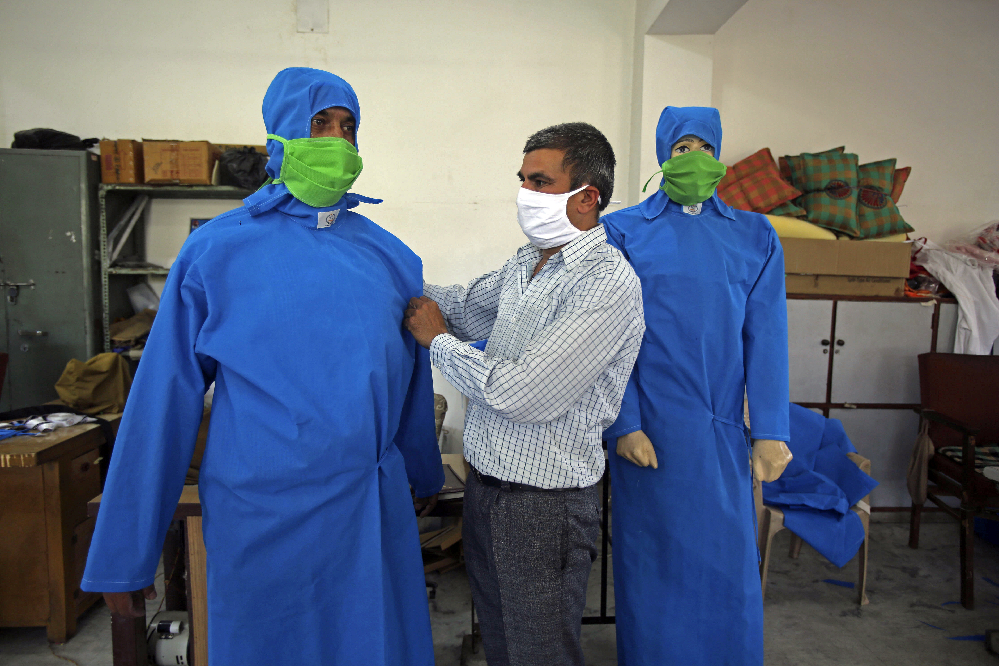
China's timely measures to prevent the fast spreading virus in Wuhan, the country's COVID-19 epicenter, and as well as effective experiences of cooperation between its 31 provinces, autonomous regions and municipalities have offered some key lessons for India and other countries also. Given its population density and its weaknesses in health infrastructure, it is now necessary for India to look at what has China done in the COVID-19 fight at the height of the outbreak in Wuhan.
Since the deadly virus hadn't spread exponentially from Wuhan and the surrounding Hubei Province to the rest of China, as part of resource pooling, the Chinese government had sent the necessary medical equipment such as ventilators, surgical masks, testing kits and other materials to Wuhan from all over the country. Two COVID-19 specialized hospitals were built in Wuhan within 10 days. Sports stadiums and convention centers were converted into temporary hospitals. In addition to military medics, more than 40,000 health workers from every hospital across the country were sent to Wuhan in tackling the pandemic.
Faced with "the most challenging public health disaster in decades," without wasting valuable time, on January 23, the Chinese administration locked down Wuhan and completely separated Hubei Province from the rest of the country to contain the virus. More importantly, during the 76-day lockdown, all necessary items from food to medicine had been sent to all the doors. Ambulances were sent if anyone was ill in the buildings and community halls. People from all walks of life have been encouraged with sufficient funds and resources by the Chinese government. In this way they were able to stop the transmission of the brutal virus. None of this is a cock-and-bull story. And the World Health Organization (WHO) was right in stating that China's strong measures not only controlled the spread of the epidemic in China, but also prevented it from spreading to other countries, "setting a new benchmark for countries around the world to fight against the epidemic".
It is easily understandable how COVID-19 would be catastrophic in a country like India where pneumonia, TB, malaria, dengue, diarrhea and malnutrition have already become part and parcel of marginalized's life. It should be noted here that the Indian government spends only 1.3 percent of GDP in the public health sector in the last two decades which is far less than the rest of the world. Obviously, the whole India is engulfed now about the hanging danger of the infectious COVID-19 outbreak mainly because of the large population of the country, the weakness of the health infrastructure and poor sanitation in both urban and rural areas.
However, since the growth rate of confirmed of COVID-19 cases increases rapidly, the lockdown and social distancing are India's only panacea to halt the spread of the deadly pandemic in the country but at the same time it can be said that imposing a lockdown at four hours' notice, the interest of millions of poor citizens, landless farmers and migrant laborers with no savings has not taken into consideration. It is sad but true that during the lockdown period, the supply of essential commodities with an income support for the working poor has not been ensured despite some ameliorative packages taken by both the center and state governments and celebrity donations. On the other hand, the Chinese government had ensured the doorstep delivery of daily necessities for the quarantined people during its battle against COVID-19.
Although China does not ask any other country to copy its anti-pandemic strategy, India needs to look at China's coordinated effort which has effectively halted the progress of COVID-19 by protecting its citizens to a large extent. And truly speaking, China's swift response to the epidemic has attested the country's leadership capability on the global stage. Only lockdown will not solve the ongoing crisis. The COVID-19 crisis has demonstrated various shortcomings of India's health infrastructure exposing the need of more testing labs in the remote parts of the country. If India wants to get rid of the devastating viral attack, following the footsteps of China, it should improve its primary health care infrastructure at local level.
Editor's note: Rabi Sankar Bosu, an Indian freelance contributor to Chinese media outlets, writes about Chinese politics, social and cultural issues, and China-India relations with special interest on the Belt and Road Initiative. The article reflects the author's views, and not necessarily those of China Military Online.
